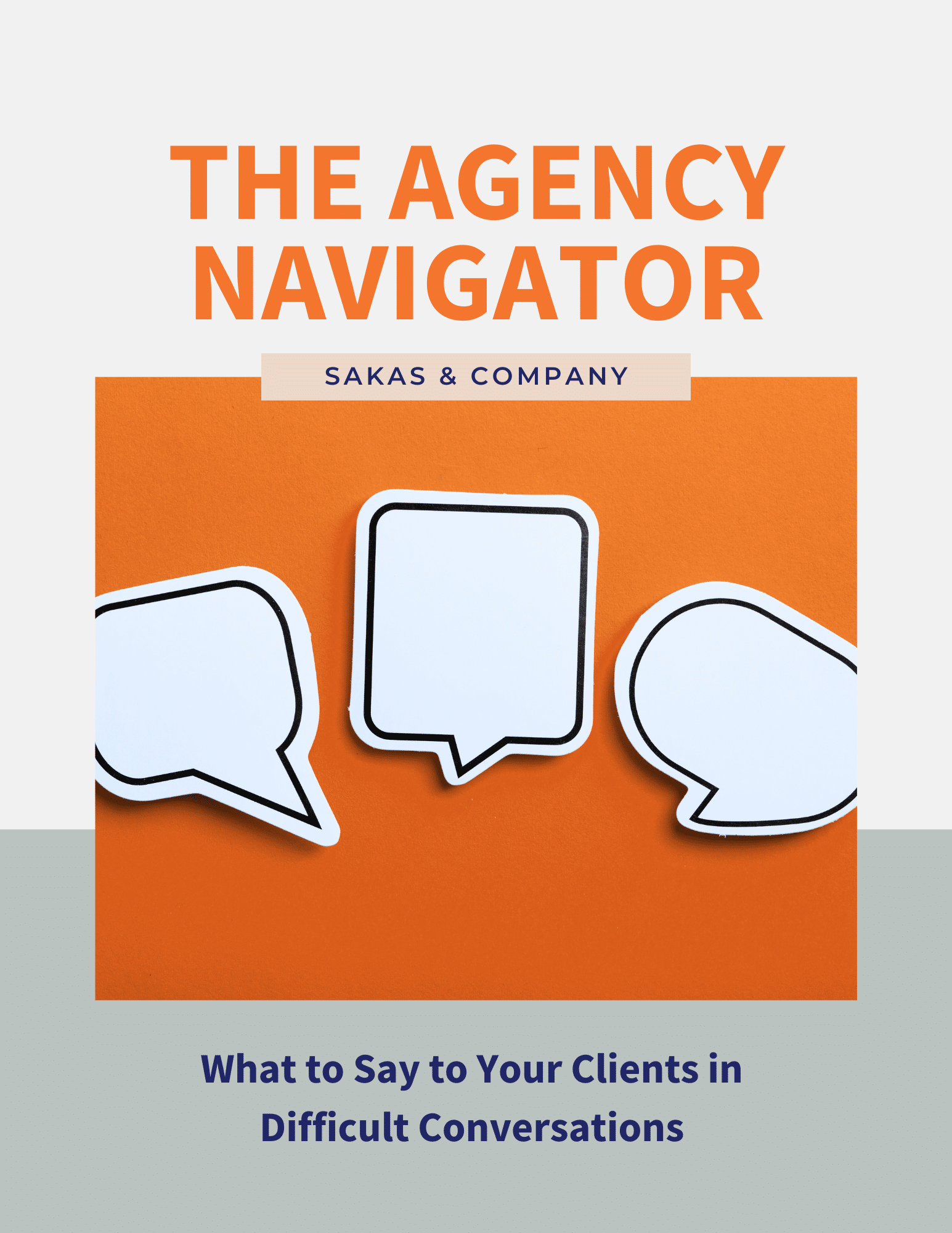Continuous improvement helps you make your agency better—but be careful about trying to improve things too quickly.
Why? You’ll frustrate your team—and your clients and prospects—because they’ll feel whipsawed as they try to keep up.
A cautionary tale in the making
Here’s a cautionary tale about what I’ll call “too continuous improvement,” from an agency director who emailed me earlier this year (my bolding):
“The biggest issue at <AgencyName> right now is change management. We’ve got a good weekly process that’s well documented, but production team members aren’t catching on quite quickly enough. That leads to leadership iterating on process in small bits, which makes it hard for team members to keep track of the ‘Process v3.1.6’ iterations.
The effect so far is small tension points and mistakes made—nothing too cumulative yet, but we haven’t had one week where everything’s gone right to help us confirm that we’re on the right track.
Worse, team members are starting to feel that process is taking precedence over people, or at least that leadership’s focus is there recently.”
Continuous improvement is good, but it sounds like her agency is improving a little too continuously. She acknowledged the owners’ changes were well-intentioned, but she and her direct reports were having trouble keeping up. It’s only a matter of time before the rapid “fixes” manage to “break” something else.
Your risks rise with agency size
When your agency has fewer than 10 people, you can get away with rapid changes. When you have 25+ people, you’re too big to “go rogue.” And when you’re 50+ people, “too continuous improvement” can create some really big problems that hurt employee and client retention.
Thinking about your agency and “too continuous improvement,” let’s look today at why it happens, where it tends to happen, and how to prevent it from hurting you.
Why does “too continuous improvement” happen?
Usually it’s because the agency owner is naturally a high-urgency person (high D = Dominance on the DiSC behavioral assessment). They just want to get things done ASAP. That’s a good orientation, but it sometimes leads to pushing their team to do things faster than is reasonable.
Other times, the “too continuous” is reactive—because the owner or other leaders went to a conference or read an article that resonated. The leaders suddenly feel the need to change things immediately. It’s well-intentioned, but unlikely to create a positive long-term change.
I struggle with this, too—but my team helps “save me from myself.” That usually works because, in part, their job is to push back when they see me making a bad decision. Yet many of my clients don’t have that failsafe, because their employees don’t feel safe pushing back.
To help you save you from yourself—regardless of your team—let’s look at places where the problem often happens.
Where can “too continuous improvement” happen at agencies?
When it comes to too-rapid change, the biggest negative impact occurs when a change impacts multiple people or multiple types of roles. For example:
- Team Structure: Pause before you make a change; odds are good that it has bigger impacts than the one problem you’re trying to solve.
- Job Responsibilities: If no one knows who’s in charge of what, it can lead to duplicate efforts… or zero efforts, because no one knew they were supposed to do something this week.
- Personnel Assignments: If you move people to new jobs after just a few months, they’ll never get good at their current job.
- Service Offerings: You have some flexibility when you do custom work, but definitely not if you use a “productized services” model.
- Sales Process: Be sure you’re gathering key points in your sales process, or you’ll find your team wasting time on unqualified prospects that should have been fast-failed a long time ago.
- Client Onboarding Process: Your systems aren’t set up to manage 10 different versions of the onboarding process. Rapid changes mean clients don’t have a consistent experience.
- Client Delivery Process: As in client onboarding, you likely can’t afford to profitably deliver a slightly-different experience for every single client.
- Lead-Gen Focus: Be patient; allow enough time for tactics to get traction before you switch to a new shiny object.
Ready to handle things a better way at your agency? Read on for my tips!
8 tips to address your urge for “too continuous improvement”
If you’re naturally a high-urgency person, you aren’t likely to stop your desire for change. Instead, consider these tips to keep your desire for improvement from going too far.
- Accept that your too-fast changes have consequences. You don’t want to “break” your agency, right? Slow down.
- Read the Meltdown book by Clearfield & Tilcsik. When a system is complex (rather than simple) and tightly-coupled (rather than loosely-coupled), it’s prone to fail. This book illustrates why to slow down (and simplify) when you can… and to be extra careful when you can’t.
- Be intentional. Think through the potential outcomes of your decisions, before you take action.
- Apply an “idea quarantine” after conferences. Don’t overwhelm your team with new ideas, until you’ve had a week (or two) to reflect on what you learned… and to consider which ideas are worth pursuing.
- Get expert advice. Don’t start everything from scratch; get advice from someone who’s been there before.
- Ask for stakeholder input. Get input from people impacted by the change; they’ll likely have insights you might not notice yourself.
- “Batch” your changes. Consider making changes in small groups, instead of making them continuously. When you “batch” the changes, the changes are more obvious to your team.
- Use “version control.” You need a way to keep track of which version of the process is current; more on that below.
Thinking about “version control” for your changes
Let’s expand on the idea of “version control” and “batches”:
- In software development, you can use Github for version control; it’s relatively easy to see what’s changed.
- In aviation, regulators use NOTAM (notice to airmen) announcements to share about key changes (like closed runways, disabled warning beacons, or nearby parachute jumps).
- In film and TV production, producers use color-coded revision pages to show what’s changed over time.
Instead of changing everything constantly, roll out changes in batches. Test the changes in smaller ways to see what seems to work—and get feedback from stakeholders—before making it the new official policy.
To be clear, I’m not saying “don’t change at all.” Instead, this is about being more intentional about the changes you make. Agencies are complex systems; you don’t want rapid-fire changes to hurt employee retention, client retention, or lead-gen results.
Question: How have you struggled with “too continuous improvement” at your agency?


